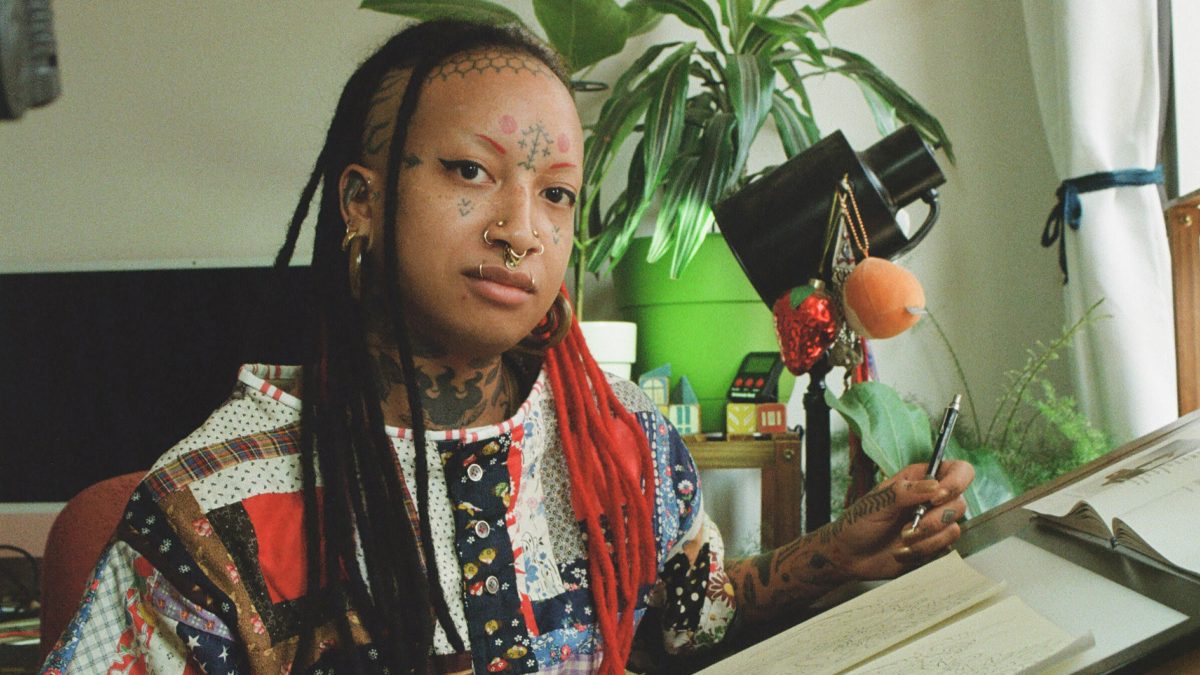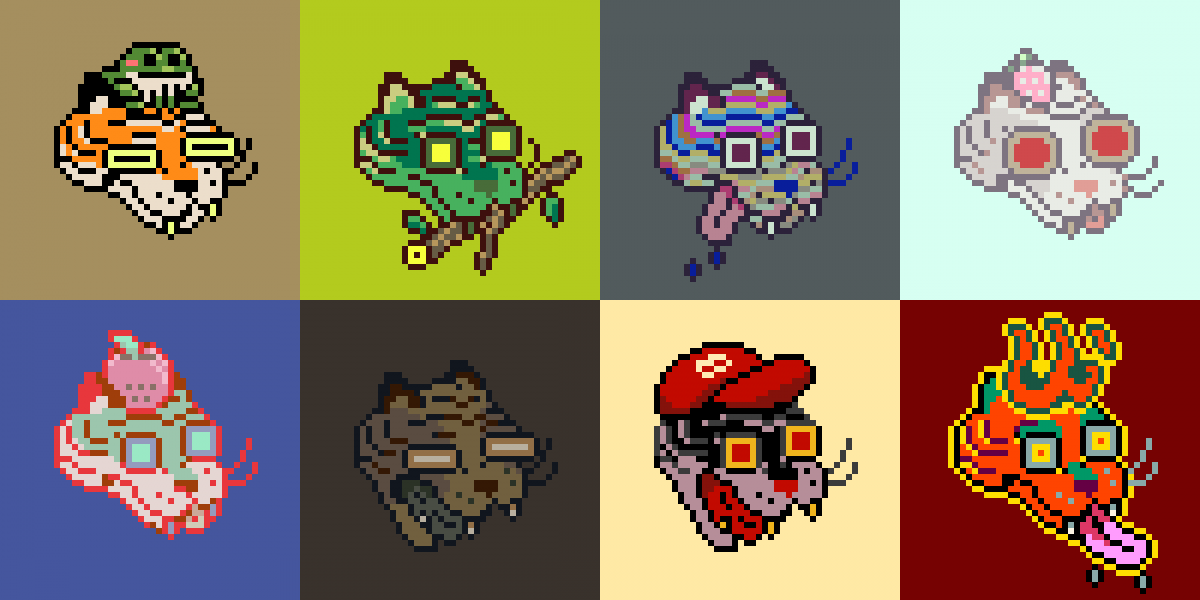Gossamer Rozen on identity and the only path to NFT success

To quote a meme, we live in a society. But the interdisciplinary artist Gossamer Rozen gets this better than most. An apparent jack-of-all-trades, the road to notoriety for the transgender, non-binary, femme, Filipina/Black artist has been very complicated. But despite nearly a decade of not monetizing their art, Rozen continued to create, not in hopes of achieving greatness, but to achieve a different kind of success, through being true to who they are.
“Growing up with a lot of different mental health issues and coming out as transgender when I was 24, art really helped me understand and relate to people, and to myself,” Rozen said in an interview with nft now. “The process of creating art for me is very healing and very meditative. It’s really me have to do as a person.”
Rozen says art is something they would do regardless of reception, and this attitude helped their work grow from Web2 to Web3. Leveraging their skills as a tattoo artist, illustrator, crypto artist, project founder, has given them undeniable influence in the NFT space.
Rozen’s popular Tigerbob collection made a mark through the PFP NFT market, cementing their name on the short list of influential NFT innovators. And now more than ever, their long road to prosperity, compounded by their desire to create change through NFTs, has highlighted the need for a humanistic and individualized approach to creating and consuming content in the Web3 space.
Charting a path through the creative industry
For Rozen, his arrival in the NFT space came after years of professional development. As individuals, they have long centered their identity around art, initially acquiring a love of creative expression via manga, anime and sequential art which in turn led to them becoming a self-taught illustrator.
Throughout grade school, Rozen developed his skills, but later changed directions to expand his horizons by venturing into sculpting in college, receiving a degree in the field while still maintaining his pen and paper skills. This artistic flexibility would inevitably become a feature of their identity which grew out of a desire to translate ideas across different media.
“The purpose [of sculpting] was to expand the different working mediums I could create in. From abstract sculptures to illustrative pieces while trying to find other ways to create, Rozen said. “So when I brought that work into Web3, I could look back at a long history of iteration on both abstract works, based very heavily on textiles and pattern, and illustrative, more traditional comic art.”
Through their ever-expanding catalog of NFT drops and collections, Rozen’s “story of iteration” and creation is displayed across mediums. But even before they cut their teeth in the NFT space, this ability to intertwine discipline and identity drove them to become tattoo artists, where their first big break in the creative industry occurred.

They grew up in a home where East Asian art abounds, so it was easy for Rozen to channel her heritage into her visual works. Their unique style of stick-and-poke, heavily inspired by both their African and Filipino roots, as well as the history of the tattoo itself, would eventually catch the attention of Dr. MartensSquarespace, Inked Magazine and more – further solidifying their status as an industry professional.
Just a few years after Rozen had become a full-time artist, the effort led them into an unusual career path. But their journey of self-expression would only continue to evolve, as the adventure entered the strange wide world of NFTs.
Setting sail in the NFT room
After becoming interested/involved in NFT around early 2021, it took Rozen about a year to break into the upper echelon of NFT founders. But their understanding of preparing and presenting their works across both physical and digital stages certainly gave them a leg up from the start.
While many have ventured into the NFT space on a whim, Rozen gave serious thought to the idea of entering the ecosystem. “One of the first things I had to spend time analyzing was, what kind of work can be sold in this space, and how can I work with that formula to also create work that is very real to myself,” they said.
Rozen tested the waters with a collection of small groups called the SQUISHIN KITTIES, which laid the foundation for their tiger-centric NFT empire. From tattoo-themed projects on the Tezos blockchain to thoughtful, hand-drawn interpretations of West African currencies, each release served as a brick in the full-scale renovation of Rozen’s identity as a Web3 creator.
In connection with solo releases, Rozen also became a collaborator on a number of innovative and fan-favorite NFT projects such as Deadfellaz and ANIMO. But when they were chosen to be the main artist and art director of Woodies NFT, their identity would change again as it was. brought into the spotlight of NFT philanthropy.
Through Woodies, Rozen helped raise more than $200,000 for reforestation. This enabled Woodies to plant one million trees – a major milestone for an industry that is often unfairly criticized as bad for the environment.
When it came time for Rozen to take a break and reinvest in their personal endeavors to launch their own large-scale project, Tigerbob, the spirit of collaboration and philanthropy apparently helped dictate every decision they made.

“I think I’ve always wanted to be able to give back to the world in some way. In the same way that the world has been very kind to me as I have gone through so many different kinds of struggles when it comes to mental health and being a marginalized person in several different ways, Rozen told nft now. “To finally be able to make money that I can not only give back to myself, but also to others – I think it’s really important to pay it forward.”
During the first few months of Tigerbob’s existence, Rozen had already donated funds to both The Trevor Project and National network for abortion funds. While this further solidified their name as a leader in the NFT philanthropy space, it also reflected their affluence and pride as a transgender person with a womb – showcasing both the diversity and individuality that can be achieved in the NFT space.
An individualistic approach to NFT success
In general, some of the milestones in Rozen’s Web3 career feel ambiguous when taken at face value. As an independent artist who forged their own path through the NFT market, they undoubtedly have a kinship with others who have done the same. But despite sharing startup origins, their story is a reminder that individualism remains a prominent theme, even within the NFT space.
It goes without saying that there is no secret formula for NFT success. While a select few artists and projects have helped define what performance can look like, those looking to follow in the exact footsteps of their predecessors are likely to find the market uninterested in repeat efforts.
Rozen did not find success as a fluke, but as the result of months of trial and error. Through a series of projects, they learned and grew, gaining confidence in the market and grasping their strengths. And while some projects lack lasting success due to hype, Rozen’s Tigerbob was a calculated execution. One that was inspired by, but not a derivative of, someone else’s project.
“The project is only 1,000 pieces, each of which I made myself by hand, so they were not generative in any way. It was a very time-consuming project,” Rozen recalled of the early stages of creating Tigerbob. “I feel that the work is so well received because it is so unique in the fact that it is not like other projects that are generative, it is closer to an art project.”
Yet, for every single NFT success, there surely exist a dozen monumental failures. Whether it’s missing cash-out opportunities, losing money on an investment, or failing to gain traction after a project launch, the NFT space can be discouraging. In short, not everyone who creates, sells or trades NFTs is going to get rich.
The fact is that success stories often serve to create unrealistic expectations. And for Rozen, these unrealistic expectations are one of the biggest pitfalls in the NFT space. While NFT fame and fortune are incredibly tempting for both creators and consumers, these performance indicators are in most cases unattainable.
This is why Rozen’s story is so inspiring. Not because it draws on the rags-to-riches themes that constantly abound in the NFT space, but because it shows how silencing the noise and taking an individualistic approach to your own endeavors can be the only true path to Web3 success.
Deep down, many of us knew this from the start. After all, the Beeple’s and XCOPY’s of the world didn’t get their footing by following someone else’s routine. Top NFT sales, even those on Rozen’s list, are merely a reminder of enormous potential, not a field guide to success.

























